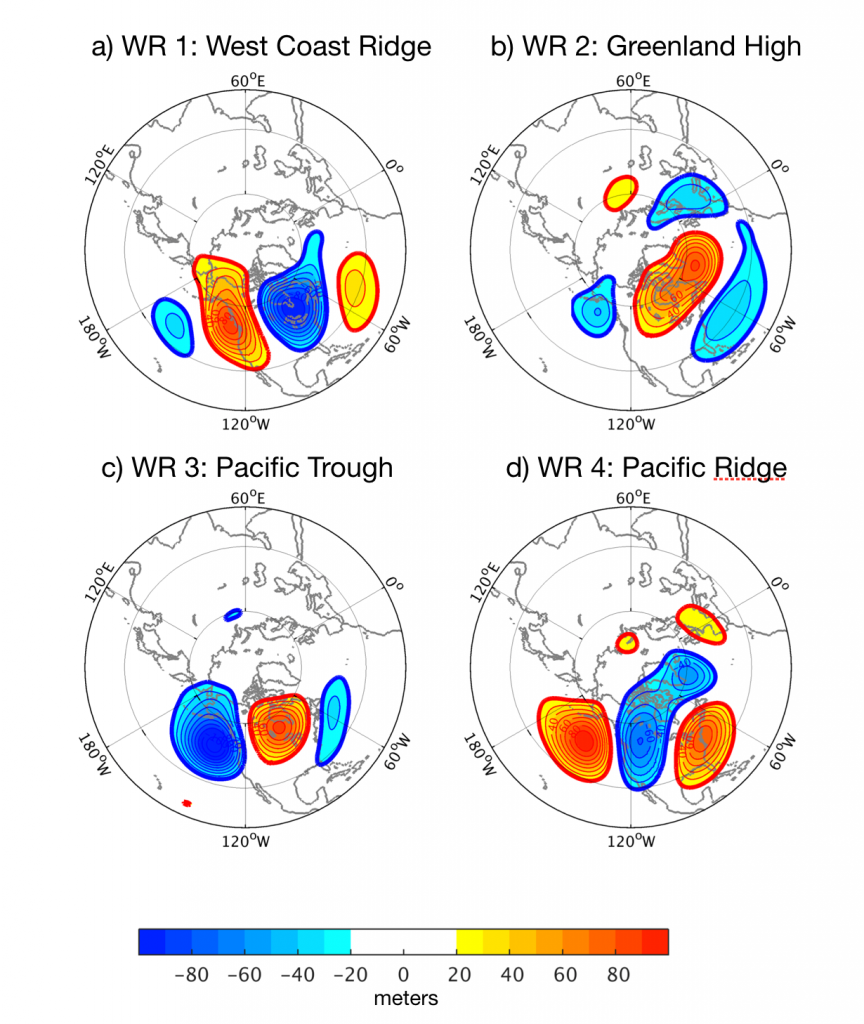Until recently, predicting rainfall and temperature at the subseasonal timescale (i.e. between two weeks and three months) was considered impossible. That’s beginning to change, and several of the International Research Institute for Climate and Society’s activities at American Geophysical Union meeting this week highlight the work of its scientists in this new field of climate prediction. IRI has now released its first subseasonal forecasts, using a similar format as its seasonal forecasts. More on this below from IRI’s Andrew Robertson, who co-chairs the Steering Group for the international Subseasonal to Seasonal (S2S) Prediction Project. New, creative methods of predicting rainfall, temperature and other climate variables are also being explored, as illustrated below by Nicolas Vigaud’s work. Finally, Michael Bell explains how IRI has been shoring up its data infrastructure to provide researchers with easy-to-access S2S datasets and analysis tools in the IRI Data Library.

Andrew Robertson on the New Forecasts
Are IRI’s new subseasonal forecasts the first subseasonal forecasts to be available publicly in real time? What has made it possible to have these forecasts?
To the best of my knowledge, they are the first calibrated, probabilistic multi-model subseasonal forecasts of precipitation to be available in a real time. These purely model-based products are currently made available experimentally—primarily for researchers and others that are interested. CPC has been issuing week 3-4 outlooks (which contain a subjective element) of temperature operationally and precipitation experimentally since May 2017.
This advance over the last 10 years is made possible through improvement of the models. In practical terms, these forecasts have been made possible through the “Subseasonal eXperiment (SubX)” project. SubX is a NOAA/Climate Testbed project with 7 global models to investigate subseasonal predictability and make the real-time predictions publicly available experimentally. We have based our forecasts on SubX.
Are the forecasts ready to be used by decision makers, or are they still experimental?
No. They are very much experimental. The forecast skill in many areas is still low, but the process of making them enables us to gain insight into when, where and why they work, to inform their eventual use. We have started making these forecasts in the last couple of months and the poster presents some initial results on this.
Which decision making groups are most interested in S2S info—is there a demand from one sector more than others?
S2S forecasting is a new area which has understandably piqued the interest across many sectors, especially those that are already using seasonal forecasts to inform decisions, including the agriculture, water resources, public health and humanitarian aid sectors. For example, in the latter case, it takes up to a month for the Red Cross/Red Crescent to respond in the event of major flood, which is just the lead time of subseasonal forecasts. So given enough forecast accuracy, subseasonal forecasts could enable them to act preemptively.
 Nicolas Vigaud on Harvesting Subseasonal Predictability
Nicolas Vigaud on Harvesting Subseasonal Predictability
You’re predicting weather regimes, not the daily weather variables in every location, is that right? Can you explain what a weather regime is, and could it eventually be used (at least in theory) to predict the weather in the way we access it on our TV, computers and phones?
Weather regimes are based on recurrent patterns of pressure and circulation anomalies over vast geographical areas, also referred to as large-scale teleconnection patterns. In this study, we’re classifying weather regimes based on how the atmosphere is behaving at a height of tens of thousands of feet. Since weather regimes have distinct and significant relationships to rainfall and surface temperatures, they are indeed well-suited to predict variations for both these variables.

At IRI, we are currently producing real-time daily evolution of US wintertime weather regimes using submonthly forecasts from NOAA’s CFSv2 model. These are available here. As an example, the prevalence of the West Coast Ridge (WR1 in the figure) in late October and November during California wildfires was well predicted in CFSv2, as well as the Pacific Trough (WR3 in the figure) when intense rainfall and flooding episodes followed, thus suggesting potential for fire early warming and flood prediction.
What’s the latest in terms of our ability to predict the weather up to four weeks ahead?
Our current ability to accurately forecast weather regimes at the daily and weekly scale is limited beyond two weeks ahead. But, there’s evidence of relationships between weather regimes and known sources of prediction, such as the El Niño Southern Oscillation, the Madden-Julian Oscillation and other patterns in the sea surface temperatures in the Atlantic and Indian Oceans. These relationships suggest further potential for subseasonal predictability.

Michael Bell on Building the Infrastructure for S2S Research
There seems to be a lot of exciting research happening for the subseasonal climate timescale, both at IRI and at research centers around the globe. Can you explain the role the IRI Data Library plays in this research?
The IRI Data Library is serving as a central repository of S2S and SubX data for researchers who are interested in using these subseasonal forecasts and hindcasts in their work. A variety of modeling centers produce these data, and they have been brought together within the IRI Data Library as a public central archive, rather than making researchers look for the data in many different places. The various modeling centers provided their data in a format largely consistent with each other, and the Data Library brings them together into a dataset where the different models can be compared and used together in analyses. Additionally, the Data Library has powerful tools that allow researchers to easily select subsets of the data, analyze the data and visualize and download the results in a variety of formats (tutorials here). So, it is not just a central archive, but also a place online where researchers can work with the data.
What’s next—what are the future plans for S2S resources in the Data Library?
The S2S and SubX forecasts continue to be issued by the modeling centers, and these will continue to be updated and made available in the Data Library in real time in the case of the SubX project, or with a delay of about three weeks for the S2S dataset. Researchers at the IRI are also creating experimental forecast tools based upon the subseasonal forecasts and hindcasts that are being made into online Maprooms hosted by the Data Library, as Andy Robertson spoke to above.
Visit IRI’s full schedule of AGU activities to discover more talks and presentations.


